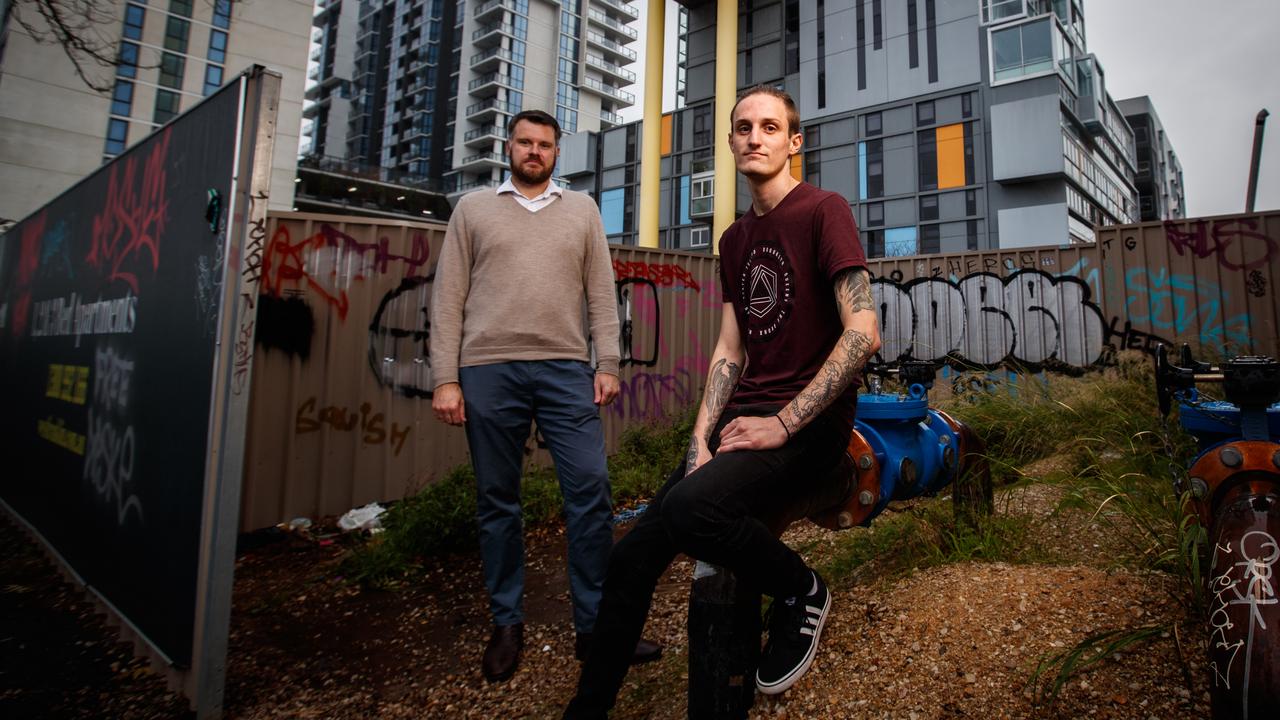Did your South Australian ancestors stand on the side of women?
Did your ancestors help make SA the world leader on women’s political rights? Read to find out whether your forebears played a pivotal part in our history — and discover what more needs to be done.
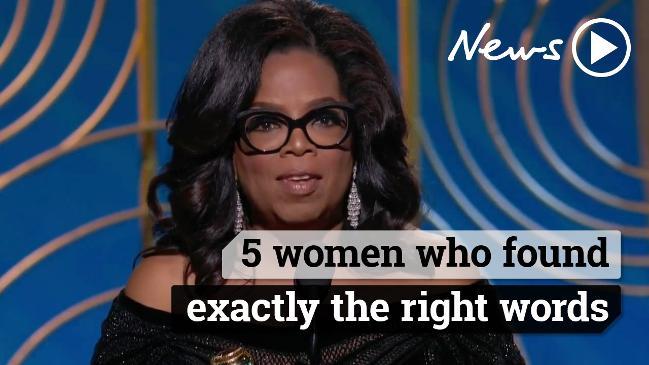
SA Weekend
Don't miss out on the headlines from SA Weekend. Followed categories will be added to My News.
South Australians, up to five generations deep, are using a recently developed online map to trace their ancestral footprints 125 years back in time to a pivotal moment in global political history.
This month in 1894, suffragists from every corner of the state were frantically driving the final push for signatories of a record-breaking petition that would give SA women the first right to vote in Australia.
Among them were the Christian Women’s Temperance Union members leading the charge with its founders Mary Lee and Mary Colton at the helm.
With horse and cart, and pen and paper in hand, these pioneers gathered more than 11,600 supporters behind their cause — everyday men and women prepared to fight for gender equality that changed the face of world politics.
On Thursday, August 23, 1894, the 30m-long petition was tabled in state parliament. The record-breaking entreaty was labelled a “monster” at the time because of its sheer size and weight.
The South Australian parliament passed the Constitutional Amendment (Adult Suffrage) Act in December that year, which also gave SA women the first right in the world to stand for parliament and paved the way for 21st century female political powerbrokers like German Chancellor Angela Merkel (Forbes magazine’s most powerful female in the world in 2017), first African female president and Nobel Peace prize recipient Ellen Johnson Sirleaf (Liberia), former US Attorney-General Loretta Lynch and Australia’s own first female Prime Minister Julia Gillard.
It was not until February 1895 that the Bill became enacted though when signed by Queen Victoria — ending a decade-long struggle and three previously failed attempts at equal voting rights for women at the state polls.
The original petition that finally saw change is stored under lock and key in the House of Assembly’s vault at North Tce.
SEARCH THE PETITION — DID YOUR FAMILY SIGN?
Now, in its 125th year, the History Trust of South Australia and State Records of South Australia have rebooted the historic document using 21st century technology.
Those faceless men and women who signed the mammoth roll call for change — some simply with their initials — are now being identified by descendants more than a century after the ink has dried, thanks to social media and the internet.
Over the past several months, volunteers and staff from State Records and the History Trust have helped develop a searchable online database by cross-referencing names from a 1994 master photocopy of the petition with the original.
The process has enabled the Centre for Democracy to create two interactive online maps, which reveal for the first time the significantly widespread imprint of the suffragettes.
The petitioner chartered furthest west from Adelaide was T.D. Stewart from York, in Western Australia, and furthest east was George Rice from Melbourne who signed the petition while visiting Glenelg. The most remote petitioner of the state was Ruth Smith of Bowden Hill — just south of the NT border.
While many of the signatories lived in or close to the capital, remote centres like Quorn, Port Pirie, Port Augusta, Kadina and the Barossa were also well represented.
State Records says the gender and country/metropolitan split of petitioners was 50/50 and that the reach into other colonies highlighted the petition’s national significance.

The History Trust’s Kristy Kokegei says what’s been most interesting from the process has been the public response from a Facebook post by the Trust announcing the new online database.
She says Adelaide families have been able to discover their ancestral links to the petition — many of them unaware of their history-making connections to SA’s trail- blazing political equality advocates.
Among them are mother and daughter Meredith and Tamara Wenham.
“It really made me feel proud as a South Australian that I am part of a state that gave women the vote so much earlier than the rest of the world,” Meredith Wenham says.
State Records programs and engagement officer Helen Chadwick says social media activity and volunteers have also highlighted more of the colony’s pioneering women linked to the fight for women’s right to vote.
“We have found Charlotte Wright — the first woman to graduate in the arts at the University of Adelaide in the 1880s, signed the petition. At the time she was working as the principal of Semaphore High School,” Chadwick says.
“We found Clara A. Pavis, listed as a Lieutenant at Exeter, and found out she was a Lieutenant in the Salvation Army.
“This adds to the tradition of dissenting religious groups signing the petition perhaps in larger numbers than the established churches.
“And English Baptist Minister Silas Mead appears to have signed the petition three times — on pages 102, 115 and 136.” Mead founded the Flinders Street Baptist Church in Adelaide, which became the centre of the South Australian Baptist Union.
“It’s been a massive project,” Chadwick says.
She says volunteers were able to update the 1994 database with corrected names after cross referencing them with the original petition. They found more than 1300 names were missing — either illegible or on pages that had been damaged or stuck together.
“What has surprised me most is the sheer number of people who signed this petition — it shows a massive groundswell of support and is quite unique in Australia and the world,” she says. “It shows what a very proud history South Australia has in being a place of many firsts.”
Also marking the 125th anniversary will be the digitisation of the original hard copies of the various petitions submitted to state parliament, including the “monster” of 1894.
South Australia’s first female Attorney-General Vickie Chapman says the Parliament Research Library will make the originals available online for the first time.
“The scanned copies will be made available to both the library and the House of Assembly for separate storage and can be used for both non-profit and non-commercial purposes,” she says.
“The purpose of this is to promote public access to these historical documents, which have been instrumental in gaining the right to vote for the women of South Australia. It is just one way in which we honour the incredible achievement that followed years of campaigning and lobbying by men and women of South Australia.
“This initiative will help commemorate their tireless campaign and pays homage to everyone who provided their signatures on these petitions for change. They put their passion into action, and we are indebted to them.”
DEEP THINKER BACKS WOMEN
Since turning 21, Adelaide grandmother of four Patricia Booth has cast her vote more than 30 times in state and federal elections.
Patricia’s 20-year-old granddaughter Serena Booth made her federal electoral debut this year.
Until a few months ago, the pair were unaware of their ancestral connection to the suffrage movement that delivered South Australian women the first right to vote in Australia 125 years ago.
“I kind of take it all for granted — the right to vote,” Serena says. “I had no idea what it was like back then.”
In the late 1800s, women were denied rights considered basic today. They could not vote, were not allowed to do the same work as men, and had no representation in government.
It was ordinary South Australians like Serena’s great-great-great-great-great-grandfather Ephraim Coombe that helped improve the gender parity now being lived by his female descendants.
Ephraim, a store keeper and postmaster, inked his name on the historic suffrage petition in 1894.
It’s a link to the suffrage movement just discovered earlier this year by Patricia and historian Helen Hennessy through the Centre for Democracy website while researching for a book on Ephraim’s son — Ephraim Henry Coombe (E.H. Coombe).
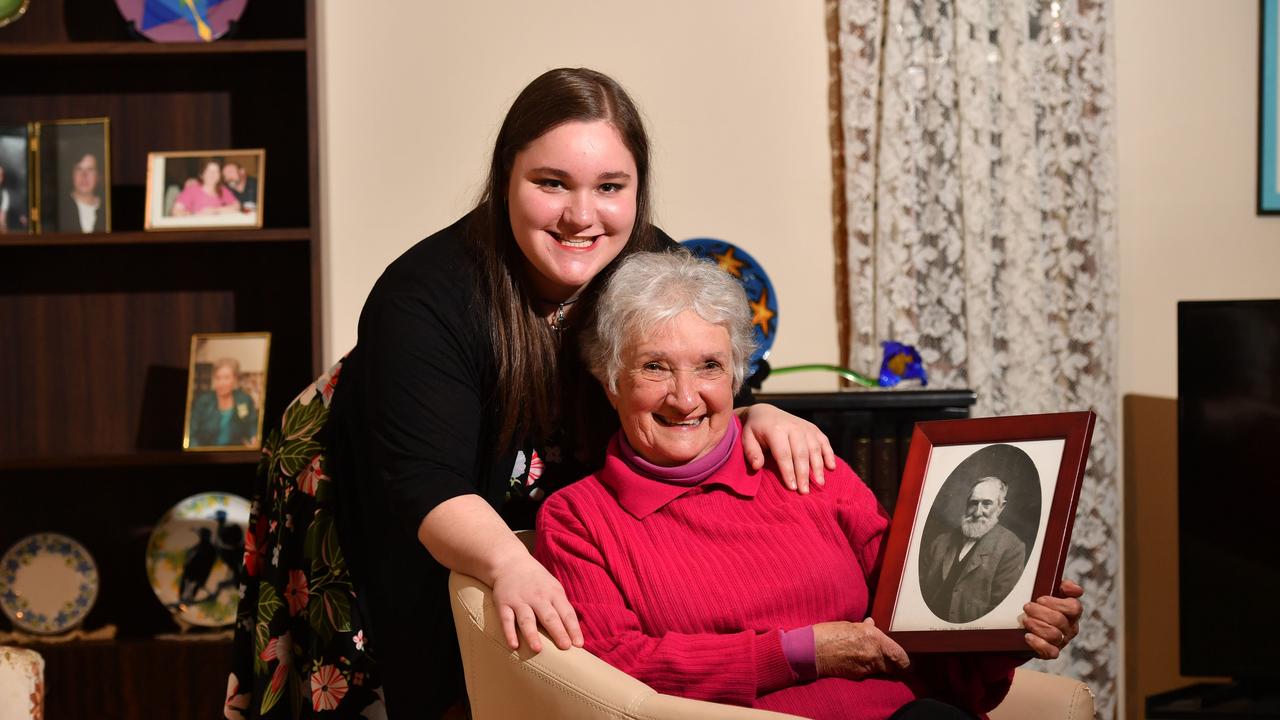
E.H. Coombe was the state member for Barossa for the Liberal and Democratic party (1901-12) and for Labor (1915-17).
He named his second-born daughter in 1898 after leading suffragist Catherine Helen Spence, and was editor of the Bunyip newspaper in Gawler when the suffrage petition was making its way through the region.
Aged 36 at the time, he did not sign it. But his 66-year-old father did. It’s an anomaly that bewilders Patricia.
“It was a real shock,” she says. “I would have assumed he (E.H. Coombe) would have signed it.”
She believes her great-great-great-grandfather (Ephraim Coombe) must have heard the suffragists speak first-hand at Gawler, where they were known to have visited — including Catherine Spence.
Ephraim had humble beginnings in Devon, working as a labourer at seven and migrating to Australia in 1855. He set up his own store and was a leading figure in the Willaston Wesleyan Church.
Patricia says he was a deep-thinking man who had brought up sons keen to serve their communities and so must have felt compelled to level the balance of political power for women.
“I am so pleased he signed it because it’s such a landmark document.”
COURAGE TO VOTE ‘YES’
Meredith Wenham let out an enthusiastic cheer across the archive office after discovering her family’s link to the state’s most important historical document for female citizens.
“I was reading along — checking, checking, checking and then I went ‘yippee’ — look who we found,” she says.
The State Records of South Australia volunteer from Edwardstown has spent several months scouring through thousands of names from the 1894 petition that made SA women the first in the nation given the right to vote.
She was part of a team reconciling a 1994 listing of petition names with a microfilm copy of the original document.
Her work is giving South Australians the chance to discover their historical links to past suffragists at the click of a mouse or a swipe on the smart phone.
“It’s been a fantastic detective exercise — I’ve thoroughly enjoyed it,” Meredith, 71, says.
She’s sighted the signatures of SA chief justice and lieutenant governor Sir Samuel James Way and SA pioneering suffragette Mary Lee.
“Coming across those signatures was quite inspirational.”
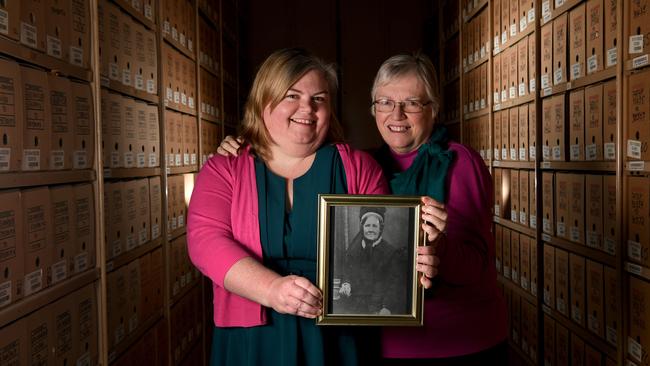
But it was the names of petitioners Albert and Sibella Wenham that gave her the greatest joy.
Lyrup Village settlers Albert and Sibella, the parents of seven daughters and five sons, are the great- great-aunt and uncle of Meredith’s husband Peter.
“I was so excited.”
Since the discovery, family research has uncovered the Wenhams were at the centre of a gender divide occurring within the Lyrup settlement itself at the same time the suffragettes were petitioning the region for political equality.
Meredith’s daughter Tamara says around May 1894, the Lyrup settlement was deciding on whether women members should be allowed to vote in the management matters of the new community.
They voted yes, she says, but then revoked the voting rights of women six weeks later after the suffragette petition was tabled in state parliament. A newspaper article at the time states the ‘yes’ vote for women at Lyrup had led to division in families and some men using “treats” and “force” to sway their wives’ votes.
Tamara, a team leader of archival services at State Records, says she is proud of her great-great-great- aunt and uncle’s supportive stance of the yes vote for women at a time when their own community was so divided.
“I think it was such a courageous thing to do and I am so incredibly proud of them and South Australia for really being ahead of the curve.”
INFLUENTIAL FIGHTER FOR RIGHT TO VOTE
Online digitisation of the historic 1894 suffrage petition this year has delivered 102-year-old Kenneth Bails from Beverley an unexpected bequest from the past.
He and his family have come to learn Mary Ann Bails (nee Lewis) was among the 11,600 women and men who fought for political gender equity.
Mary Ann is Kenneth’s paternal grandmother.
“I wasn’t aware she was a suffragette — but I’m not surprised,” he says.
“She was a strong believer in equality.”
Mary Ann was a founding member of the Alberton Methodist Church. She was aged 52 and the mother of eight children when she signed the petition.
“She was a very patient person and well spoken,” Kenneth says.
“She said what she meant and you would never move her off a belief she had.”
Most of Mary Ann’s life was spent working for the church and volunteering to support its charitable works.
“A lot of people in the community would have looked up to her for guidance,” Kenneth says, adding her signature would have had ripple effects across Alberton.
“It makes you feel very proud because the petition is such an important piece of our state history.”
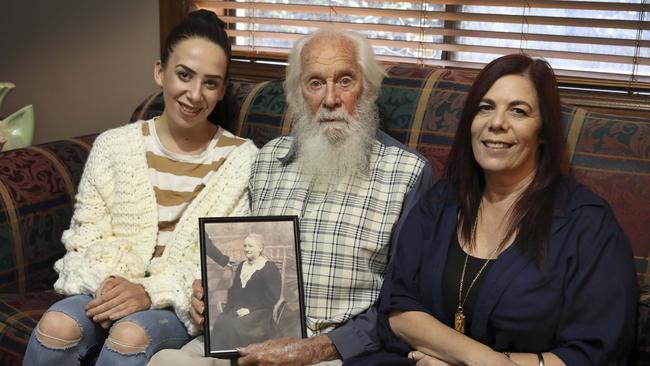
But Kenneth says more needs so be done to reach complete gender parity within Australian parliaments.
“I’d like to see it progress even more,” he says.
Kenneth’s daughter-in-law, Lee-Anne Bails, says she checked the online alphabetical listing posted on the Centre for Democracy website earlier this year to see whether the family was represented on the petition.
“I had been to a History Week event at Parliament House a year ago and the petition was mentioned and I wondered ‘what if’ back then.
“So when I looked up online — oh, my God — there was the Bails name. It was just by chance that I looked it up.”
Lee-Anne says the men and women who put their names to the suffragettes’ cause deserve celebrating.
“It’s very important they are recognised by new generations,” she says.
“Looking back, it’s amazing what those first women fought for and what they had to do to get equal rights — it must have taken a lot of courage.”
Lee-Anne acknowledges she is a custodian of that courage, as is her daughter Emma — who recently voted in her first federal election.
“Celebrating the 125th anniversary is a good reminder of the equal rights women have at the poll thanks to those pioneers like our own Mary Ann Bails.”
LONG ROAD BUT NO EQUALITY
AUGUST 1894 Petition with 11,600+ signatures calling for women’s right to vote.
FEBRUARY 1895 SA is first in the nation to give women the right to vote, and first in the world to allow women to stand for parliament. WA followed in 1899 and NSW in 1902.
APRIL 25, 1896 The first Australian election and referendum in which women could cast a vote held in Adelaide.
APRIL 1918 Selena Siggins and Jeanne Young are the first women to stand for SA parliament.
MARCH 1959 Joyce Steele and Jessie Cooper are the first women elected to SA parliament.
1986 MLC Anne Levy is the first woman to preside over a house of parliament in Australia.
2007 Julia Gillard becomes the first female Prime Minister of Australia.
2018 Vickie Chapman becomes SA’s first female Attorney-General.
Women make up 32 per cent of federal MPs and 36 per cent of state MPs.
In the past 125 years, more than 60 of the state’s 900-plus elected members were women. Australia is 48th in the world for female government representation, along with Angola and Peru.
The Advertiser has declared 2019 the Year of the Woman and in February released its inaugural Ceiling Smashers dossier celebrating women who have changed the course of our state’s history.
Now we want to hear from you — if you know an amazing woman who has blazed a trail, nominate her for our second Ceiling Smashers.


